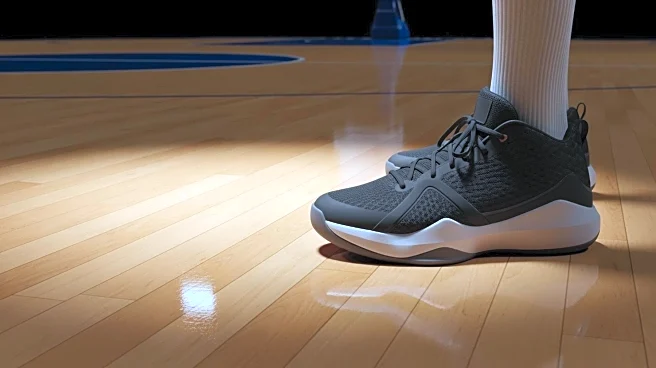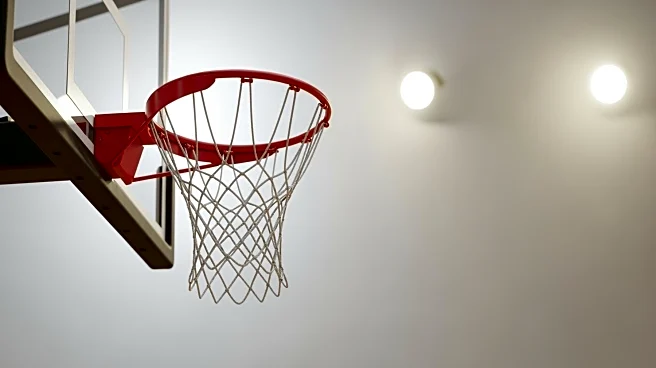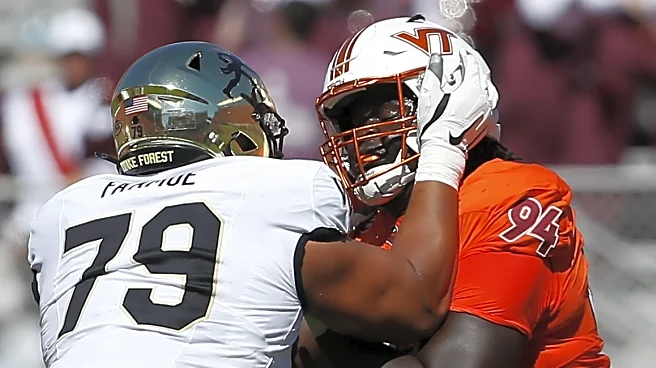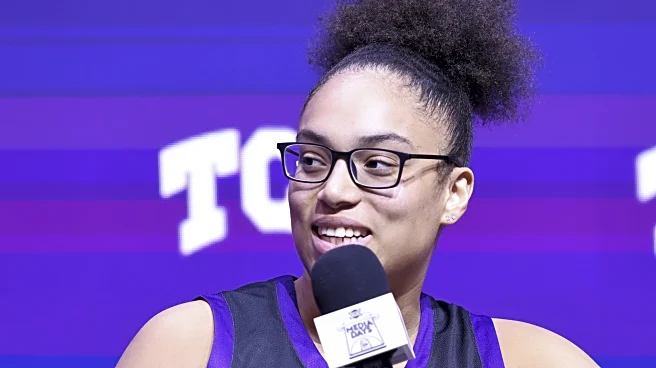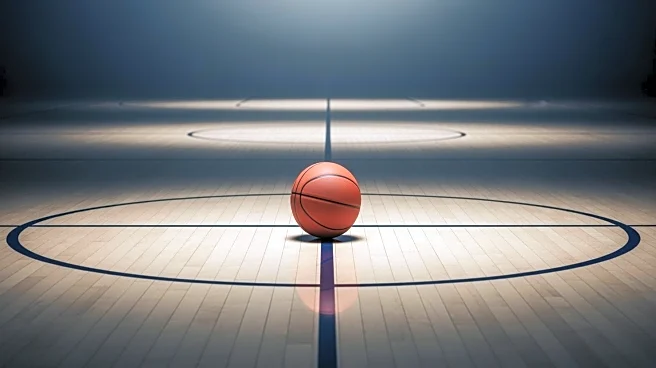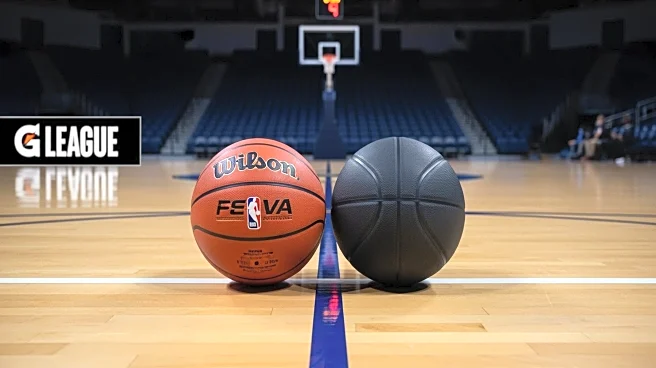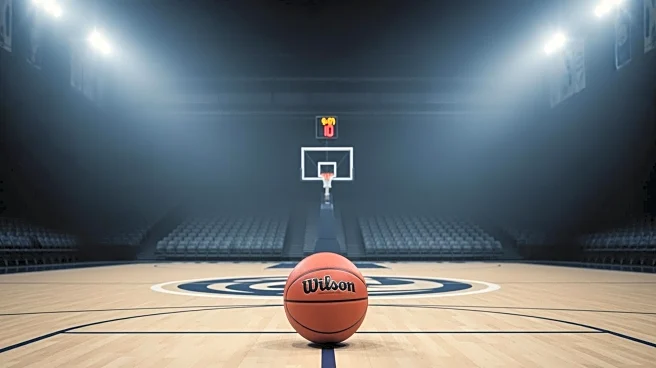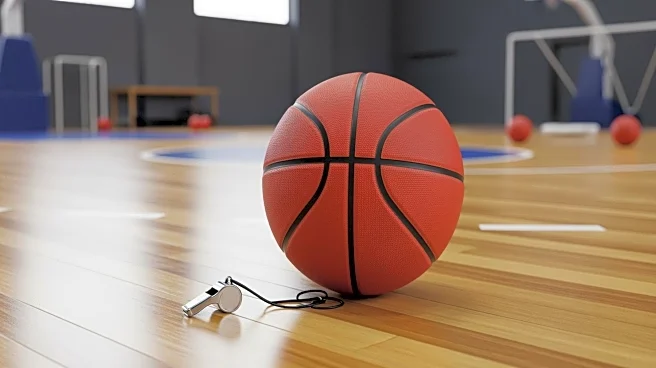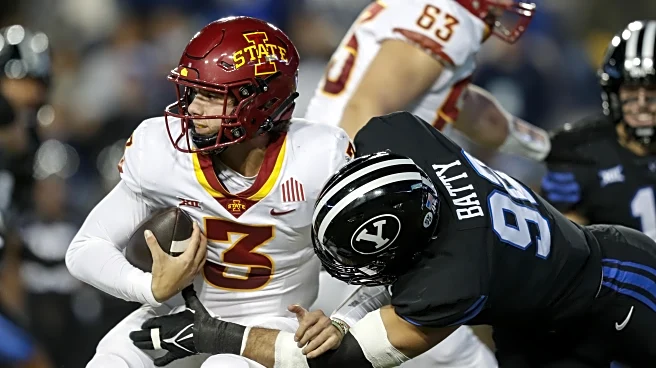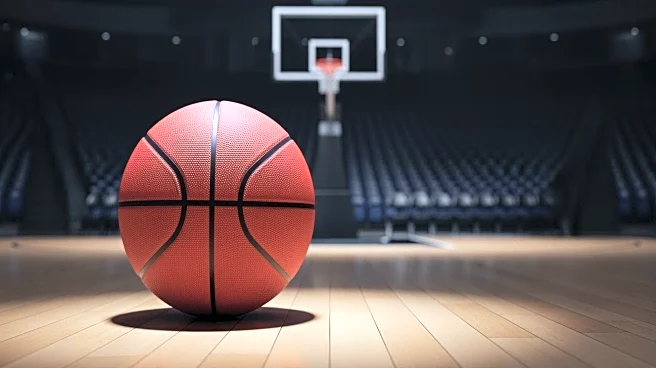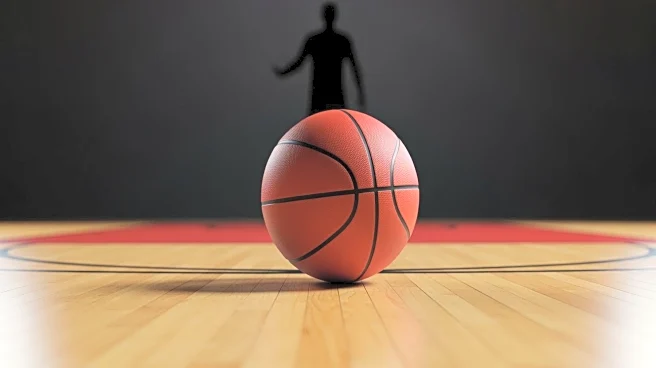What's Happening?
The NCAA's decision to allow college basketball players to transfer without sitting out a year has significantly altered the landscape of the sport. This policy change, implemented in August 2022, has led
to a rise in 'transient transfers,' where players frequently move between schools. PJ Haggerty, a high-profile transfer, exemplifies this trend, having played for multiple schools including TCU, Tulsa, and Memphis before joining Kansas State. The introduction of compensation for name, image, and likeness has further complicated the situation, creating a free agency-like environment in college basketball. This has resulted in entire rosters changing each offseason, with players seeking better opportunities or systems that fit their playing style.
Why It's Important?
The shift in transfer policies has profound implications for college basketball. It offers players more freedom and flexibility, allowing them to seek environments that best suit their athletic and academic goals. However, it also presents challenges, such as the difficulty of maintaining academic progress due to frequent school changes. For coaches, the constant roster turnover requires rapid adaptation and strategic recruitment to build competitive teams. This dynamic could lead to increased parity in college basketball, as programs can quickly rebuild through the transfer portal. However, it also raises concerns about the stability and continuity of college teams, potentially affecting team chemistry and long-term program development.
What's Next?
As the trend of transient transfers continues, stakeholders in college basketball, including coaches, players, and administrators, will need to navigate the complexities of this new era. Discussions around potential adjustments to transfer rules, such as limiting the number of transfers a player can make without penalty, may arise. Additionally, the impact on player development and academic achievement will likely be areas of focus. Schools may need to enhance support systems to help transferring athletes integrate academically and socially. The NCAA and individual conferences might also consider policy refinements to balance player mobility with the integrity of college sports.
Beyond the Headlines
The rise of transient transfers highlights broader cultural shifts in college athletics, where the traditional model of student-athlete loyalty to a single institution is evolving. This change reflects a more professional approach to college sports, where athletes prioritize career advancement and personal branding. The ethical implications of this shift, including the potential exploitation of young athletes and the commercialization of college sports, warrant careful consideration. Additionally, the long-term effects on fan engagement and school spirit, as players frequently change teams, could alter the traditional college sports experience.
